Base layers should fit tight against the body so that they are snug, but not so tight that they cut off circulation or restrict movement.
How tight or loose a base layer should be depends on the activity involved, personal preference, and the material used.
Regardless of how tight you choose your base layer to be, it is important to utilize a good layering system to retain or lose body heat as needed.
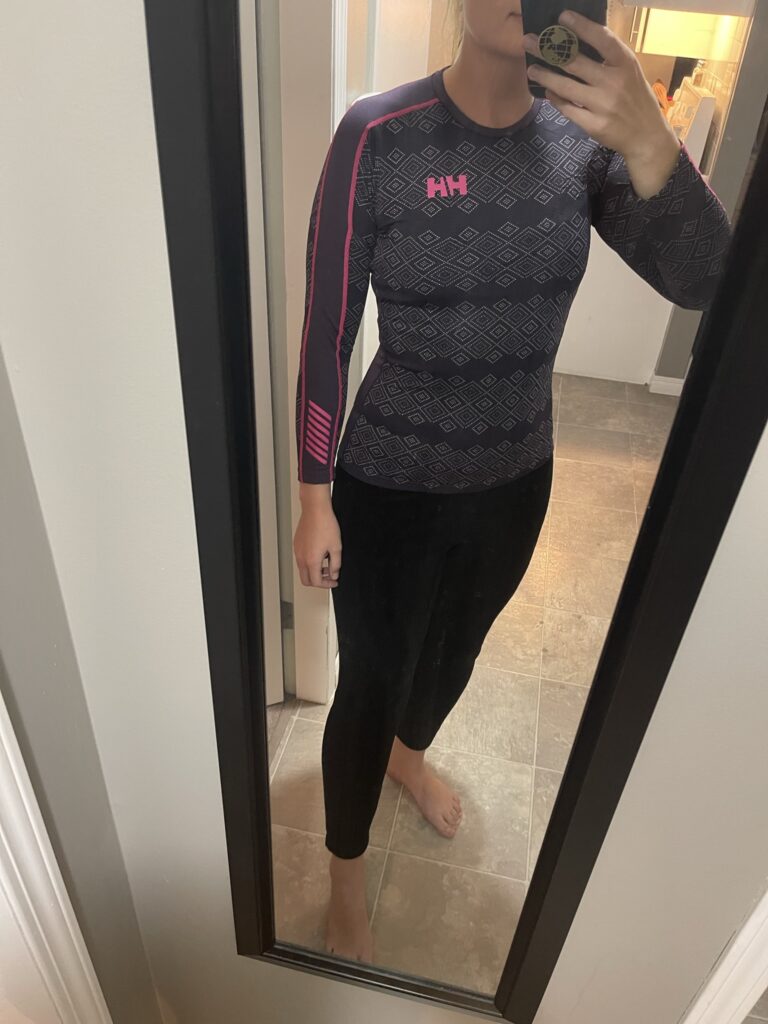
Are Base Layers Supposed to be Tight?
Yes, base layers should fit tight against your skin so that there is no air between your skin and the fabric.
When air gets trapped between sweaty skin and fabric of a base layer, we lose body heat to the air as the sweat evaporates. This causes a drop in body temperature and we feel cold.
As well, if base layers are too baggy, they will allow cold air from the surrounding environment to get in between the clothing and your skin, also causing you to feel cold.
The best way for base layers to keep you warm is by removing outer layers to cool down and prevent sweating in the first place. Close-fitting base layers help you stay warm, but if you aren’t sweating, you’re not losing body heat through evaporation.
So the main reason why base layers should fit snug against the skin is to prevent bodies from getting cold.
When Should A Base Layer Fit More Tightly?
There are four reasons why a base layers should fit extra snug (beyond just the normal-level of tightness):
1. If you’re in extremely cold environments
Individuals who are in very cold environments will likely prefer a closer fit to their base layer. Again, this is because the tighter the base layer, the warmer you’ll be.
Check out my article on what to wear underneath base layers here!
2. If you want to prevent chafing
If your activity is vigorous, you might find that tight-fitting base layers also prevent chafing.
When the fabric of the base layer is snug against the skin, fabric slides against fabric instead of skin sliding against fabric. This prevents the sores that occur when something rubs against skin repeatedly.
3. If you sweat a lot
Activities that cause you to sweat a lot may benefit from a close-fitting base layer.
This is because they will “wick” sweat away and pull it into the fabric. The sweat then evaporates from the fabric instead of the skin, preventing body heat from being lost to the surrounding air during evaporation.
4. You want to increase circulation
As well, people who require support for their circulation might prefer very tight fitting (compression) base layers.
Some studies suggest compression base layers promote blood flow, support muscles & joints, and decrease lactic acid build up. Athletes may also choose this fit for these benefits.
Athletes might also choose this fit for these benefits.
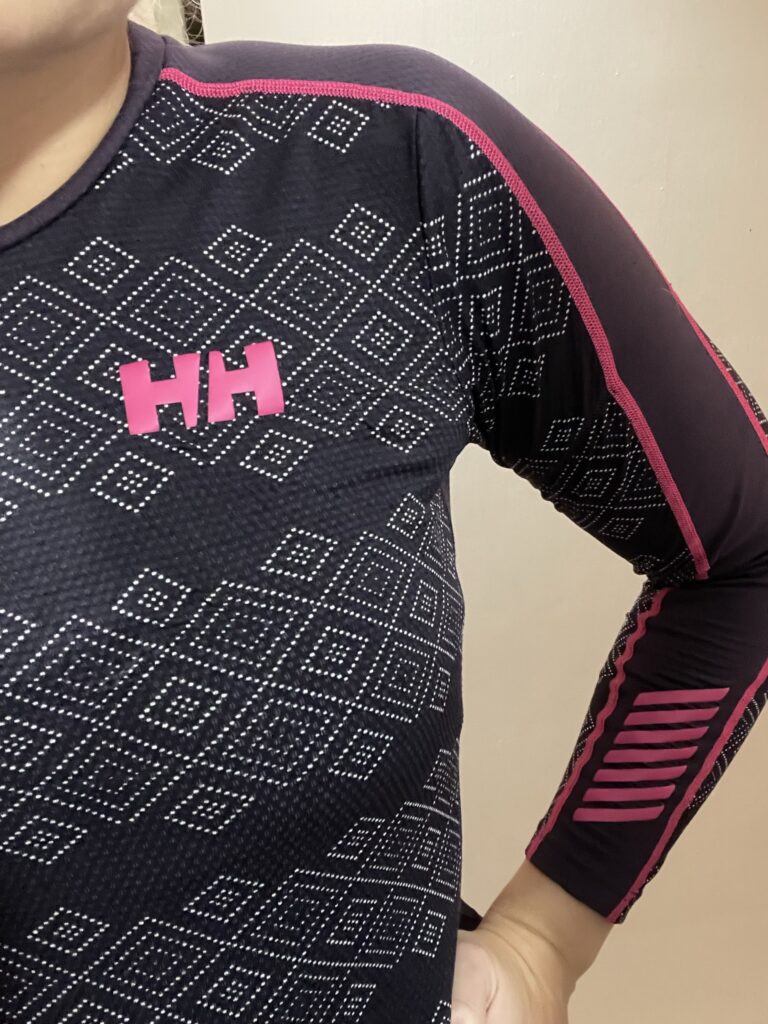
When Should A Base Layer Fit More Loosely?
There are three reasons a looser fit to a base layer might be the preferred choice:
1. You find tight clothing uncomfortable
Some people might not be able to tolerate the feeling of tight-fitting base layers. How tight a base layer fits may come down to personal preference, and that is ok.
2. You want unrestricted movement
Strenuous exercise can require a large range-of-motion, and some people may find tight-fitting base layers too restrictive for their activities. In this circumstance, a looser fit might be desired.
3. You get too hot when exercising
Heavy exercise can also produce body heat and sweat. A looser fit might then be desired to purposely cool down the body by letting in air and increasing evaporation.
Switch to a new dry base layer when activity ceases to retain body heat. It can also be easier to switch layers when the fit is more loose.
Check out my article on wearing base layers in the summer here!
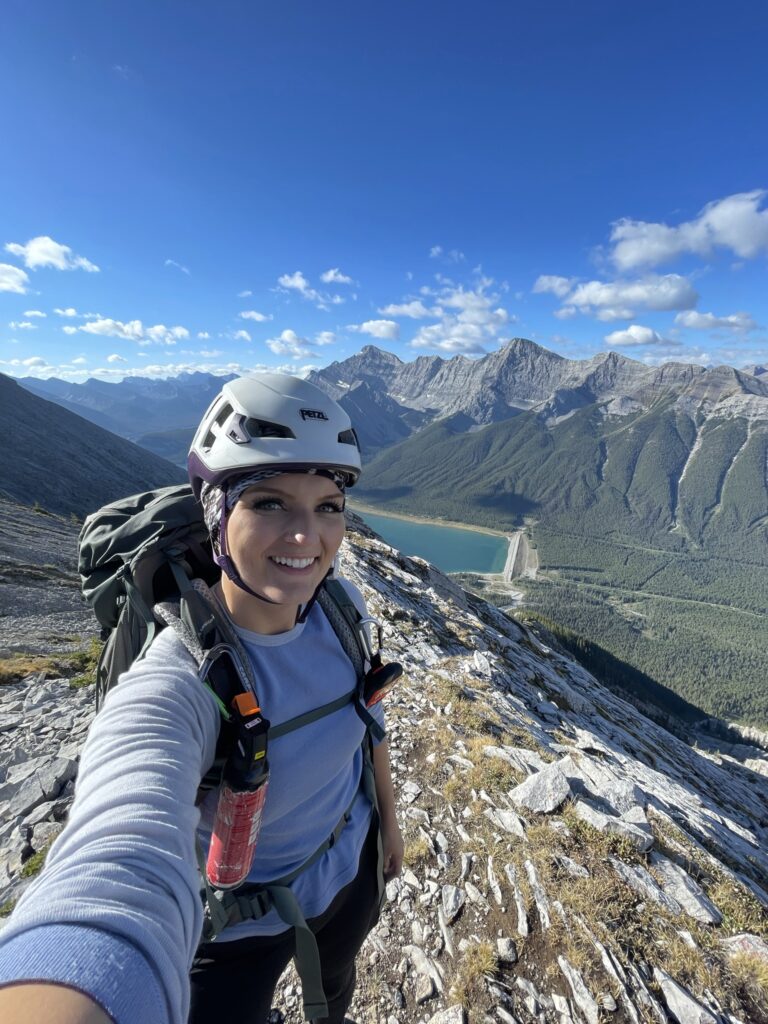
Can Base Layers Be Too Tight?
Base layers are too tight if they cut off circulation. If your fingers or toes are going tingly and numb, or if you notice your ankles are swollen, then your base layer is too tight and you should try a larger size.
In my experience, this doesn’t happen very often, but it is worth noting even though it’s rare.
Base layers are also too tight if they prevent you from doing the movements that your activity requires.
If you’re hiking up steep terrain but can’t lift your leg up, this would be detrimental to your activity, and your base layer is likely too tight. Again, consider going up a size if this happens.
Base Layer Material & How It Should Fit
Should Merino Wool Base Layers Be Tight?
Yes, Merino Wool base layers should be tight so that there is no air between your skin and the fabric.
Merino Wool base layers should fit the same as other base layers. They should be snug against the skin, but not too tight that they prevent movement or cause numbness.
The difference with Merino Wool is that it does not stretch like other base layer fabrics do (take Lycra, for instance.) Merino Wool should not be stretched over the body, but rather sit comfortably close to the skin without constriction.
Should Spandex Base Layers Be Tight?
Yes, Spandex or Lycra base layers should be the tightest kind of base layer. They are often used as compression base layers and are intended to be very tight against the body.
They should not be so tight that they cause numbness or swelling. If that happens, they are too small and you need to select a larger size.
If you find the tightness of spandex base layers uncomfortable, consider using a different material for your base layer and getting compression benefits from smaller accessories, such as compression socks or compression sleeves for joints.
How Tight Should Base Layers Be For Hiking?
Base layers should be snug for hiking, but allow for full range-of-motion. But, depending on the type of hike, whether it’s strenuous or not, you may want to size your base layers differently.
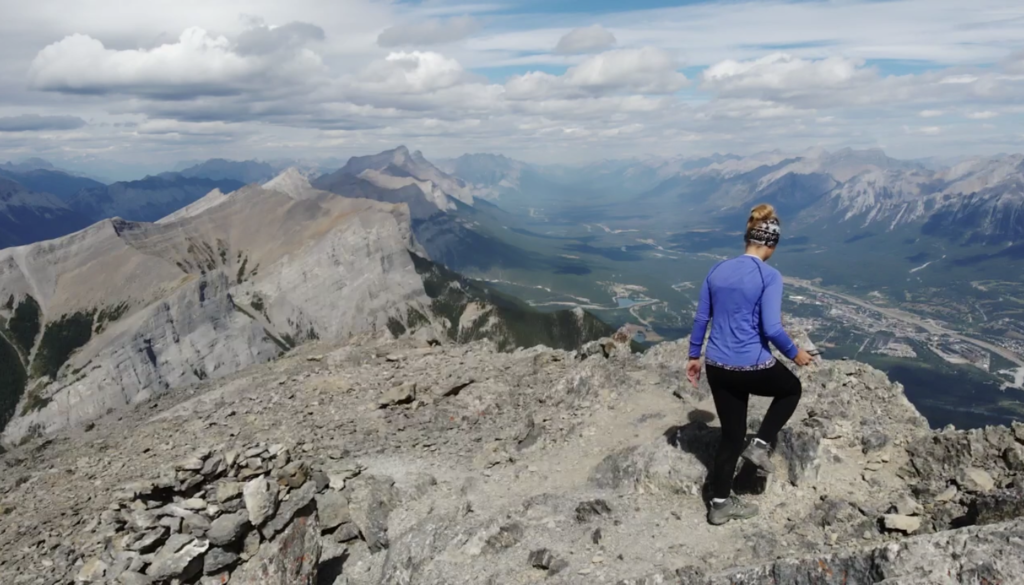
Base Layers For A Strenuous Hike
If you plan on doing a strenuous hike, I’d suggest wearing a looser-fitting base layer and packing a closer-fitting base layer.
- The first layer should not be baggy, but should be comfortable and have plenty of room for you to move your arms and legs to their full extent.
- As you hike, your body starts sweating to try to cool down. As long as you are producing heat, it is ok for your body to be cooling itself. A looser base layer will allow you to lose some of your heat and prevent you from creating even more sweat.
- When you are done with the hardest part of your hike (reaching the summit, no more uphill, etc.), I recommend changing your base layer so that any sweat the base layer absorbed isn’t sitting directly against your skin. Instead, you now have a clean dry layer in your pack.
- If you change base layers, the second base layer should fit a bit more tightly. This is because you’re now going downhill and you might not be generating as much heat, so you want the base layer to retain as much as possible.
- If you are unable to change layers, a tighter-fitting base layer is recommended throughout the activity, as it will wick away sweat, prevent chafing, and keep you warmer in the long-run when compared to a looser fit.
Base Layers For A Relaxed Hike
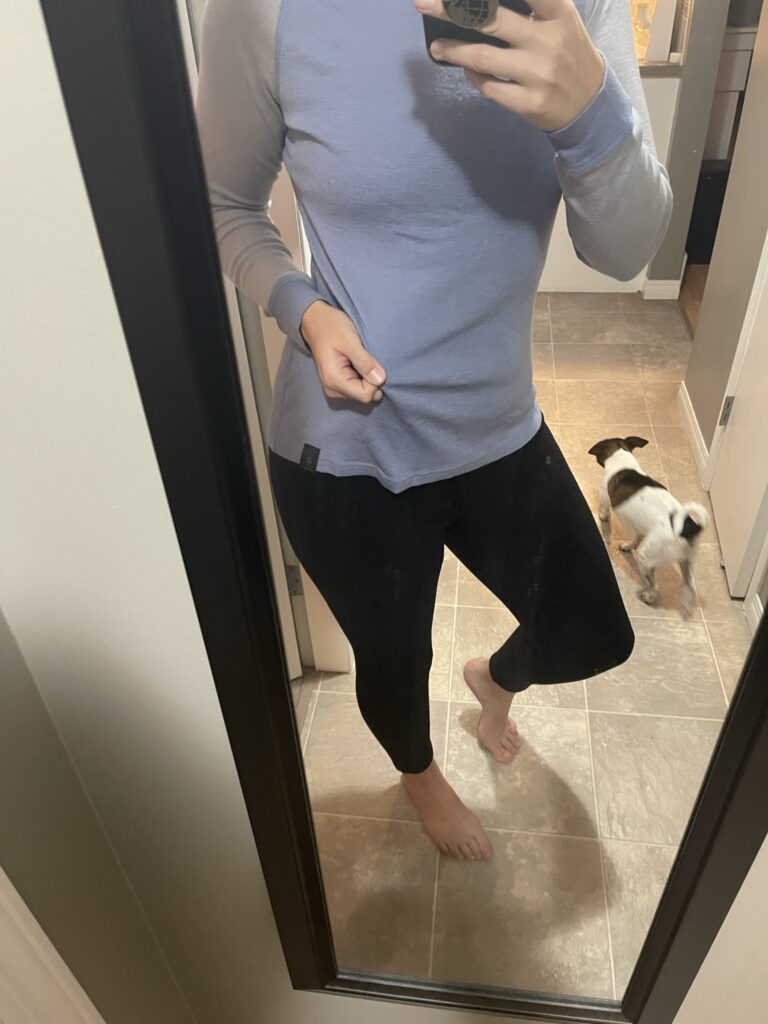
If your hike isn’t likely to cause you to sweat a lot, here is my advice:
- A comfortable but snug base layer is recommended. Any sweat you do produce will be easily wicked away and evaporate off the fabric, preventing you from losing too much body heat in the process.
- Your base layer should still allow you to move about freely without constriction. Personal preference may play a factor.
- Layers (the clothing you put on top of your base layers) will be more important than the fit of the base layer to keep you warm if your activity isn’t too vigorous.

